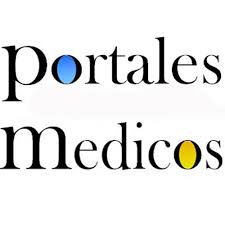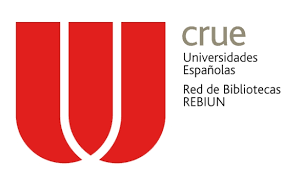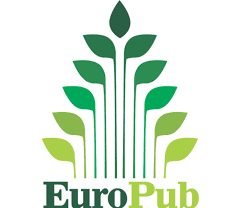Efecto de la exposición prenatal al paraquat (gramoxone® n.f.) en ratas biou: wistar. Estudio preliminar
Effect of prenatal exposure to paraquat (gramoxone® n.f.) in biou rats: wistar. Preliminary study
Resumen
El objetivo de la investigación fue determinar el efecto de la exposición prenatal al paraquat (PQ) sobre la formación craneofacial y corporal en ratas BIOU: Wistar. Metodología: estudio experimental, con cincuenta ratas gestantes, distribuidas en cinco grupos: PQ1 y PQ2, recibieron respectivamente 2 y 3 mg/kg de PQ vía subcutánea (SC); vitamina A (control positivo): tratado con 100.000 U.I. de vitamina A vía intragástrica (IG) y grupos controles (agua destilada, vía SC y vía IG). Los tratamientos fueron administrados desde el 6º al 15º día de gestación. Se comparó el peso materno los días 6, 14 y 21. Este último día se practicó laparotomía y determinó el número de implantaciones, reabsorciones, fetos vivos, muertos, peso y talla fetal, y la presencia de alteraciones craneofaciales y corporales. Resultados: no hubo diferencia significativa en la ganancia de peso materno entre los grupos. En los grupos PQ 2mg/Kg y vitamina A se registró, respectivamente, el mayor número de fetos muertos y reabsorciones. El peso y talla de los fetos del grupo vitamina A fue inferior (p<0,05) al resto. El grupo PQ 2mg/kg presentó mayor cantidad de malformaciones corporales. En el grupo vitamina A se observó macroglosia, hendidura labial y edema generalizado. Conclusión: se demostró la presencia de malformaciones corporales en fetos expuestos durante el período prenatal al PQ, evidenciando un efecto teratógeno, no dependiente de la dosis, en la línea de ratas BIOU: Wistar. Se recomienda aumentar el número de ratas gestadas, para evaluar estos resultados en futuras investigaciones.
The aim of the research was to determine the effect of prenatal exposure to the paraquat (PQ) on craniofacial and body conformation in BIOU rats: Wistar. Methodology: fifty pregnant rats were distributed in five groups: PQ1 and PQ2, respectively received 2 and 3 mg / kg of PQ via subcutaneous (s.c); vitamin A (positive control): treated with 100,000 IU of vitamin A intragastric route (i.g) and control groups (distilled water, s.c route and i.g route). The treatments were administered from 6th to the 15th day of gestation. On days 6, 14 and 21 the maternal weight was compared. On the last day, a laparotomy was performed and the number of implantations, reabsorptions, live and dead fetuses, fetal weight and height, and the presence of craniofacial and body alterations were determined. Results: there was no significant difference in maternal weight gain between the groups. In the PQ 2mg / Kg and vitamin A groups, the highest number of dead fetuses and reabsorptions were respectively registered. The fetuses weight and height in the vitamin A group was lower (p <0.05) than the rest. The PQ 2 mg / kg group presented a greater number of body malformations. In vitamin A group macroglossia, cleft lip and generalized edema were observed. Conclusion: The presence of body malformations was demonstrated in fetuses exposed during the prenatal period to PQ, showing a teratogenic effect, not dependent on the dose, in the BIOU: Wistar line of rats. It is recommended to increase the number of pregnant rats, to evaluate these results in future research.
Palabras clave
Texto completo:
PDFReferencias
Ait-Bali, Y., Ba-M’hamed, S. y Bennis, M. (2016). Prenatal Paraquat exposure induces neurobehavioral and cognitive changes in mice offspring. Environ Toxicol Pharmaco, 48:53-62.
Aksu, K., Golal, E., Aslan, M., Ustunel, I. y Acar, N. (2021). The investigation of the role of sirtuin-1 on embryo implantation in oxidative stress-induced mice. J Assist Reprod Genet. doi: 10.1007/s10815-021-02229-7.
Alarcón-Corredor, O. y Alfonso, R. (2007). Alteraciones clínicas y bioquímicas en ratas tratadas con vitamina A. Arch Latinoamer Nutr, 57: 224-230.
Almeida, L., Pitombeira, G., Teixeira, Á., Teixeira, V., Silva, V., Vieira, L. y Evêncio, J. (2021). Protective effect of melatonin against herbicides-induced hepatotoxicity in rats. Toxicol Res (Camb), 10(1), 1-10.
Almeida, L., Teixeira, Á., Soares, A., Cunha, F., Silva, V., Júnior., Vieira, L. y Wanderley-Teixeira, V. (2017). Effects of melatonin in rats in the initial third stage of pregnancy exposed to sub-lethal doses of herbicides. Acta Histochem, 119(3), 220-227.
Asghar, U., Malik, M. y Javed, A. (2016). Pesticide Exposure and Human Health: A Review. J EcosysEcograph, S5: 005.
Benítez-Díaz, P. y Miranda-Contreras, L. (2009). Efectos de la exposición prenatal a paraquat sobre el desarrollo de la transmisión sináptica aminoacídica en la corteza cerebral parietal del ratón Invest Clin, 50, 465-478.
Brawley, L., Itoh, S., Torrens, C., Barker, A., Bertram, C., Poston, L. y Hanson, M. (2003). Dietary protein restriction in pregnancy induces hypertension and vascular defects in rat male offspring. Pediatric Research, 54(1), 83-90.
Bus, J., Preache, M., Cagen, S., Posner, H., Eliason, B., Sharp, C., y Gibson, J. (1975). Fetal toxicity and distribution of paraquat and diquat in mice and rats. Toxicol Appl Pharmacol, 33(3), 450-460.
Chen, J., Jian, X., Yu, G., Si, M. y Kan, B. (2020). Fetal outcomes after intentional ingestion of paraquat: A case report. Medicine, 99(1), e18136.
Chiang, C., Mahalingam, S. y Flaws, J. (2017). Environmental Contaminants Affecting Fertility and Somatic Health. Semin Reprod Med, 35(3), 241–249.
Choi, B., Gil, Y. y Jo, U. (2002). Effect of maternal paraquat administration on the pyloric region of the developing rat stomach. Korean J BiolSci, 6, 247-252.
Costa, K., Maciel, I., Kist, L., Campos, M. y Bogo, M. (2014). Pharmacological inhibition of CXCR2 chemokine receptors modulates paraquat-induced intoxication in rats. PLoS One, 9(8), e105740.
Cousin, M., Silva, E., Kretzschmar, A., El Maataoui, M., Brunet, J. y Belzunces, L. (2013). Size changes in honey bee larvae oenocytes induced by exposure to Paraquat at very low concentrations. PLoS One, 8, e65693.
DiGiacomo, R., Deeb, B. y Anderson, R. (1992). Hypervitaminosis A and reproductive disorders in rabbits. Lab Anim Sci, 42, 250-254.
Dodo, T., Uchida, K., Hirose, T., Fukuta, T., Kojima, C., Shiraishi, I., Kato, E., Horiba, T., Mineshima, H., Okuda, Y., Maeda, M., Katsutani, N., Hirano, K. y Aoki, T. (2010). Increases in discontinuous rib cartilage and fused carpal bone in rat fetuses exposed to the teratogens, busulfan, acetazolamide, vitamin A, and ketoconazole. Hum Exp Toxicol, 29, 439-450.
Eisler, R. (1990). Paraquat hazards to fish, wildlife, and invertebrates: a synoptic review. Biological Report. https://pubs.er.usgs.gov/publication/5200090.
García, A. (1998). Occupational exposure to pesticides and congenital malformations: a review of mechanisms, methods, and results. Am J Ind Med, 33, 232-240.
Gardner, D., Jackson, A. y Langley-Evans, S. (1997). Maintenance of maternal diet-induced hypertension in the rat is dependent on glucocorticoids. Hypertension, 30, 1525–1530
Grant, H., Lantos, P. y Parkinson C. (1980). Cerebral damage in paraquat poisoning. Histopathology, 4, 185-195.
Handrawan, S., Lestari, M. y Zulkifli. (2020). Herbicide Intoxication: Still A Threat In Developing Countries. Journal of Anesthesiology and Clinical Research, 1(1), 31-42.
Hausburg, M., Dekrey, G., Salmen, J., Palic, M. y Gardiner, C. (2005). Effects of paraquat on development of preimplantation embryos in vivo and in vitro. Reprod Toxicol, 20(2), 239-246.
Hayes, W., Cobel-Geard, S., Hanley, TR Jr., Murray, J., Freshour, N., Rao, K. y John, J. (1981). Teratogenic effects of vitamin A palmitate in Fischer 344 rats. Drug Chem Toxicol, 4, 283-295.
Ingebrigtsen, K., Nafstad, I. y Andersen, R. (1984). Distribution and transplacental transfer of paraquat in rats and guinea-pigs. Gen Pharmacol, 15(3), 201-204.
Jiang, Y., Ma, Y., Wang, Z. y Li, G. (2013). Therapeutic effects of smecta or smectite powder on rats with paraquattoxication.World J Emerg Med, 4, 144-150.
Khera, K. y Whitta, L. (1968). Embryopathic effects of diquat and paraquat in the rat. IMS Ind Med Surg, 37(7), 553.
Kokubo, T., Takahashi, M., Furukawa, F., Nagano, K. y Hayashi, Y. (1984). Pathogenesis of paraquat-induced pulmonary hemorrhage in hamsters with special reference to arterial constriction. Acta Pathol Jpn, 34,41-46.
Li, B., He, X., Sun, Y. y Li, B. (2016). Developmental exposure to paraquat and maneb can impair cognition, learning and memory in Sprague-Dawley rats. Mol Biosyst,12(10),3088-3097.
Malekinejad, H., Mehrabi, M., Khoramjouy, M. y Rezaei-Golmisheh, A. (2013). Antifibrotic effect of atorvastatin on paraquat-induced pulmonary fibrosis: role of PPARγ receptors. Eur J Pharmacol, 720(1-3), 294-302.
Ministerio del Poder Popular para la Ciencia, Tecnología e Industrias Intermedias (2011). Código de Ética para la Vida. Caracas.
Miranda-Contreras, L., Dávila-Ovalles, R., Benítez-Díaz, P., Peña-Contreras, Z. y Palacios-Prü E. (2005). Effects of prenatal paraquat and mancozeb exposure on amino acid synaptic transmission in developing mouse cerebellar cortex. Brain Res Dev Brain Res, 160(1), 19-27.
Mukada, T., Sasano, N. y Sato, K. (1978). Autopsy findings in a case of acute paraquat poisoning with extensive cerebral purpura. Tohoku J Exp Med, 125, 253-263.
Müller-Ribeiro, F., Coimbra, C., Rodrigues-Machado, Mda G. y Fontes, M. (2010). Evidence that central action of paraquat interferes in the dipsogenic effect of Ang II. Neurotoxicology, 31(3), 305-309.
Mussi, M. y Calcaterra, N. (2010). Paraquat-induced oxidative stress response during amphibian early embryonic development. Comp Biochem Physiol C Toxicol Pharmacol, 151, 240-247.
Nagata, T., Kono, I., Masaoka, T. y Akahori, F. (1992). Subacute toxicity of paraquat in beagle dogs: clinicopathology and pathologic examinations. Vet Hum Toxicol, 34, 15-20.
Osano, O., Oladimeji, A., Kraak, M. y Admiraal, W. (2002). Teratogenic effects of amitraz, 2,4-dimethylaniline, and paraquat on developing frog (Xenopus) embryos. Arch Environ Contam Toxicol, 43(1), 42-49.
Ozaki, T., Nishina, H., Hanson, MA. y Poston, L. (2001). Dietary restriction in pregnant rats causes gender‐related hypertension and vascular dysfunction in offspring. J Physiol, 530(1), 141-152.
Pang, Y., Sun, Y., Sun, W., Du, W., Hao, H., Zhao, S., y Zhu, H. (2016). Melatonin inhibits paraquat-induced cell death in bovine preimplantation embryos. J Pineal Res, 60, 155-166.
Peters, A., Keen, C., Lönnerdal, B. y Hurley, L. (1986). Zinc-vitamin A interaction in pregnant and fetal rats: supplemental vitamin A does not prevent zinc-deficiency-induced teratogenesis. J Nutr, 116, 1765-1771.
Pillans, P., Folb, P. y Ponzi, S. (1988). The effects of in vivo administration of teratogenic doses of vitamin A during the preimplantation period in the mouse. Teratology, 37, 7-11.
Prahlad, K. y Harris, K. (1984). Toxicological and teratogenic studies with paraquat. Dissertation/Thesis M.S. (Master of Science). Department of Biological Sciences. Northern Illinois University. https://commons.lib.niu.edu/handle/10843/18259
Selypes, A., Nagymajtényi, L. y Berencsi, G. Mutagenic and embryotoxic effects of paraquat and diquat. Bull Environ Contam Toxicol, 25(4), 513-517.
Sun, Y., Wang, X., Yang, L., Ge, Z., Zhao, Y., Luo, S., Shen, W., Sun, Q. y Yin, S. (2021). Paraquat Reduces the Female Fertility by Impairing the Oocyte Maturation in Mice. Front Cell Dev Biol, 8, 631104.
Sorolla, J. (2010). Anomalías craneofaciales. Departamento de cirugía plástica. Hospital militar. Rev Med Clin Condes, 21(1), 5-15.
Spinder, N., Bergman, J., Boezen, H., Vermeulen, R., Kromhout, H. y de Walle, H. (2017). Maternal occupational exposure and oral clefts in offspring. Environ Health, 16(1), 83.
Tao, X., Yu, G., Guo, W., Kan, B., Song, L., Li, H.y Jian, X. (2021).Esophagitis dissecans superficialis associated with acute transoral paraquat poisoning: Clinical study of 15 cases. Sci Prog, 104(2), 368504211019647.
Tinakoua, A., Bouabid, S., Faggiani, E., De Deurwaerdère, P., Lakhdar-Ghazal, N. y Benazzouz, A. (2015).The impact of combined administration of paraquat and maneb on motor and non-motor functions in the rat. Neuroscience, 311, 118-129.
Ulbrich, B. (2013). Reproductive toxicity risk assessment for pesticides. Methods Mol Biol, 947, 545-574.
Viales, G. (2014). Intoxicación por Paraquat. Medicina Legal de Costa Rica, 31(2), 88-94.
Vilela, A., Costa, JRV., Lopes, R. y Sala, M. (2001). Acción de la hipervitaminosis A en el germen dentario de fetos de rata: estudio histológico y morfométrico. Rev. chil. Anat,19, 231-238.
Vismara, C., Bacchetta, R., Di Muzio, A., Mantecca, P., Tarca, S., Vailati, G. y Colombo, R. (2006). H2O2 induces abnormal tail flexure in Xenopus embryos: similarities with Paraquat teratogenic effects. Birth Defects Res B Dev Reprod Toxicol, 77, 238-243.
Vismara, C., Battista, V., Vailati, G. y Bacchetta, R. (2000). Paraquat induced embryotoxicity on Xenopus laevis development. Aquat Toxicol, 49,171-179.
Watts M. (2011) Paraquat. http://www.thaipan.org/sites/default/files/fileinter/monograph_paraquat_0.pdf
Zúñiga, L., Márquez, C. y Duk, S. (2007). Estudio citogenético y reproductivo en mujeres temporeras expuestas a pesticidas de la Vlll Región de Chile. Theoria, 16, 77-87.
Enlaces refback
- No hay ningún enlace refback.
Depósito Legal Electrónico: ME2016000090
ISSN Electrónico: 2610-797X
DOI: https://doi.org/10.53766/GICOS
| Se encuentra actualmente registrada y aceptada en las siguientes base de datos, directorios e índices: | |||
 | |||
 |  |  |  |
 |  | ||
 |  |  |  |
 |  |  |  |
 |  |  |  |
 |  |  |  |
![]()
Todos los documentos publicados en esta revista se distribuyen bajo una
Licencia Creative Commons Atribución -No Comercial- Compartir Igual 4.0 Internacional.
Por lo que el envío, procesamiento y publicación de artículos en la revista es totalmente gratuito.

